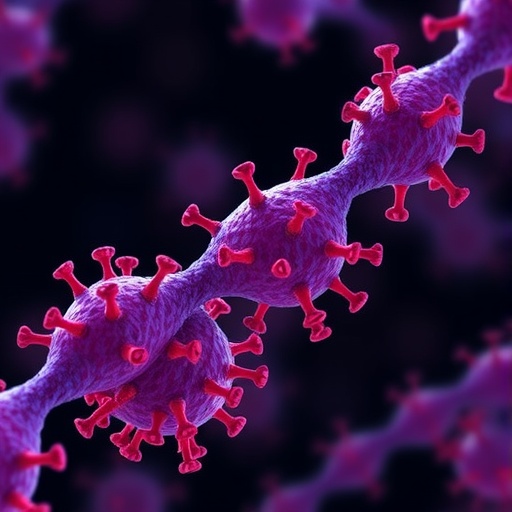A new therapy to re-engage the heart’s natural electrical pathways – instead of bypassing them – could mean more treatment options for heart failure patients who also suffer from electrical disturbances, such as arrhythmias, according to research led by the University of Chicago Medicine.
In a first-ever pilot study, called the His SYNC trial, researchers compared the effectiveness of two different cardiac resynchronization therapies, or treatments to correct irregularities in the heartbeat through implanted pacemakers and defibrillators. The current standard of care, known as biventricular pacing, uses two pacing impulses in both lower chambers, whereas the newer approach, called His bundle pacing, attempts to work toward engaging and restoring the heart’s natural physiology. The two approaches have never before been directly compared in a head-to-head clinical trial.
“This is the first prospective study in our field to compare outcomes between different ways to achieve cardiac resynchronization,” said cardiologist Roderick Tung, MD, FHRS, the Director of Cardiac Electrophysiology & EP Laboratories at the University of Chicago Medicine. “Through His bundle pacing, we’re trying to tap into the normal wiring of the heart and restore conduction the way nature intended. Previously, we have just accepted that we had to bypass it through pacing two ventricles at a time.”
Tung spearheaded the two-year trial with UChicago Medicine cardiologist Gaurav Upadhyay, MD, FHRS, lead author of the study. The trial involved 40 adult patients across seven institutions in the Midwest. The UChicago Medicine team served as the independent coordinating site. Results of the study were presented as a featured late-breaking trial at the Heart Rhythm Society’s annual scientific sessions in San Francisco on May 9. To qualify as a late-breaking trial, the research must be groundbreaking and unique. The study was also published in the Journal of the American College of Cardiology.
Biventricular pacing involves implanting wires, called leads, to simultaneously pace the right and left ventricles of the heart. A pacemaker then sends a timed electric pulse to the two leads with the goal of a synchronized contraction, which closely simulates the heart’s natural heartbeat.
Nevertheless, roughly 30 percent of patients do not respond to biventricular pacing treatment, which has been shown to improve survival in clinical trials.
Tung’s team looked to see if another resynchronization method could help reduce that number by doing a clinical trial comparison between biventricular pacing and His bundle pacing. The latter involves implanting a single lead at the start of the heart’s wiring system, which then naturally branches in two to organically distribute the pacemaker’s electric pulse to both ventricles.
“Permanent His bundle pacing has been around for almost 20 years, but until now there hasn’t been randomized clinical trials on how it compares to biventricular pacing,” Tung said.
For the His SYNC trial, all of the patients met the current guidelines for receiving cardiac resynchronization therapy and were randomly selected to receive either a His bundle pacer or a coronary sinus lead for biventricular pacing. Patients weren’t told which treatment they received.
While the results of the preliminary study did not demonstrate superiority with His-CRT, Tung and his team believe a His bundle pacing approach showed comparable rates of response, warranting further study. The research was limited by a high crossover rate, which was required by the study’s protocol if an adequate lead placement could not be achieved. Nearly half of the patients selected to receive His bundle pacing had to eventually be treated with traditional biventricular pacing due to having a condition called interventricular conduction delay (IVCD). The implantation tools have also not been refined since their introduction 10 years ago.
“We need to learn how to better identify patients who cannot and will not respond to His bundle pacing,” Tung said. “During this pilot study, we learned that the net was cast too wide, and patients with IVCD can’t be corrected and improved by His bundle pacing. His SYNC II, our planned follow-up study, will specifically exclude these patients and this is perhaps the most valuable lesson from the pilot, in addition to estimated treatment effect size.”
In addition, 26 percent of patients chosen to receive biventricular pacing did not, usually because a lead could not be inserted due to the condition of their veins dictated by strict criteria to optimize implantation of left ventricular leads.
After six months, researchers compared the electrical synchronization and structural function of the two patient groups’ hearts. Although they expected His bundle pacing to be superior, they found no overall significant differences in the two groups, with comparable rates of electrical resynchronization and echocardiographic response.
After one year, there were no differences in the number of hospitalizations or deaths.
Noting the pilot study was limited by its size, Tung says the results indicate further investigation is needed.
“Pilot studies are never meant to be conclusive,” he said. “They’re meant to inform us about effect size, safety and feasibility to help select appropriate patients and power larger studies.”
Tung praised the unprecedented collaborative nature of the project, which involved partnering with Chicago-area institutions Northwestern University, Rush University and Advocate Heart Institute, as well as Indiana University, the Geisinger Heart Institute and Baptist Health Louisville.
The His SYNC pilot study received no industry funding, and the team plans to conduct the follow-up trial once funding is secured.
###
Media Contact
Ashley Heher
[email protected]
Related Journal Article
https:/
http://dx.




